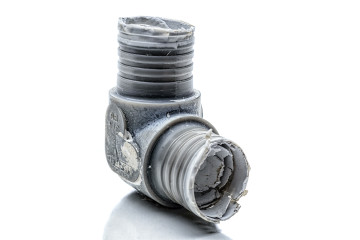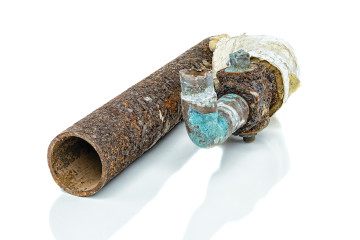Assessing Your Pipes: Make it Part of Your Annual New Year’s Checklist
Pipe problems can be one of the more expensive and devastating challenges a property can experience given the nature of leaks and their total potential damage to a building’s structure and the property of residents. Regularly checking on your property’s piping systems can ensure you catch potential problems before they become an emergency. Assessing your pipes once a year can help you avoid a costly and catastrophic leak at your community.
There are two primary causes of pipe problems to look out for: defective products and age-related problems. Depending on the age and construction techniques used in your property, you may find one or more of these potential concerns listed below when you perform a pipe inspection of your various piping systems.
Defective Products
Defective products that are prone to fail prematurely and cause catastrophic leaks include polybutylene and certain yellow brass fitted PEX systems.

Polybutylene, or “poly” for short, was a plastic resin used in the manufacturing of pipes and fittings from 1978-1995. It was installed in up to 10 million low-rise apartments and condominiums as well as single-family homes throughout North America. Common water additives like chlorine attack poly pipe and fittings, leading to stress fractures and catastrophic failure – suddenly and without warning.
Certain PEX pipe systems used connections known as high-zinc yellow brass fittings. These fittings are subject to dezincification, which can cause stress fracturing and disastrous leaks. Corrosion and stress fracturing can plague even well maintained and newly constructed buildings. Look for extensive corrosion specifically at the fitting as an indication you may have a problem.
Age-Related Problems
For buildings over 25 years old, age related problems such as deterioration and corrosion are common causes of leaks. In potable domestic water systems, aging copper and galvanized piping systems can cause leaks, low water pressure, odors, poor tasting and discolored water. Look for these signs as an indication you may have a problem that needs to be addressed.
Aging closed-loop systems often experience pipe insulation deterioration. As a result, condensation often causes these systems to corrode from the pipe’s exterior.

Loose or damp pipe insulation is a good indication you have a bigger problem lurking in your hydronic heating and cooling pipes.
Corrosion of cast iron drain, waste, and vent (DWV) piping can become a problem in older properties as well. Age-related DWV issues can often be so severe that major blockages and even complete structural failure are not uncommon. Slow draining water, odors and back-ups are common symptoms of a failing DWV piping system.
Checking In On Your Pipes
As you head into each New Year, it’s a good reminder to assess your piping systems and plan ahead to avoid any catastrophic disasters. Building owners and property managers should inspect their pipes regularly to ensure they’re in proper working condition and not showing any dangerous signs of aging.
Knowing what type of pipe is in your building, when it was installed and how it’s aging can help you plan, evaluate and prepare in advance for necessary repairs or future pipe replacements.

